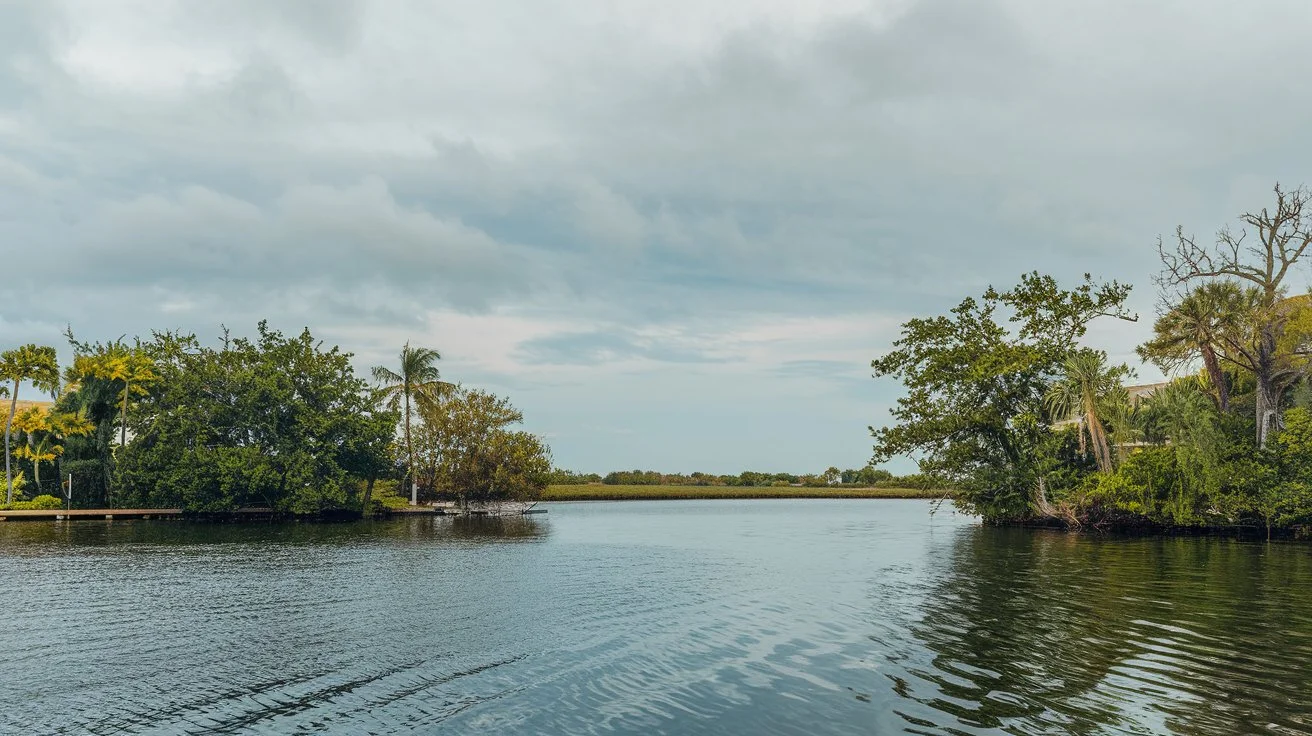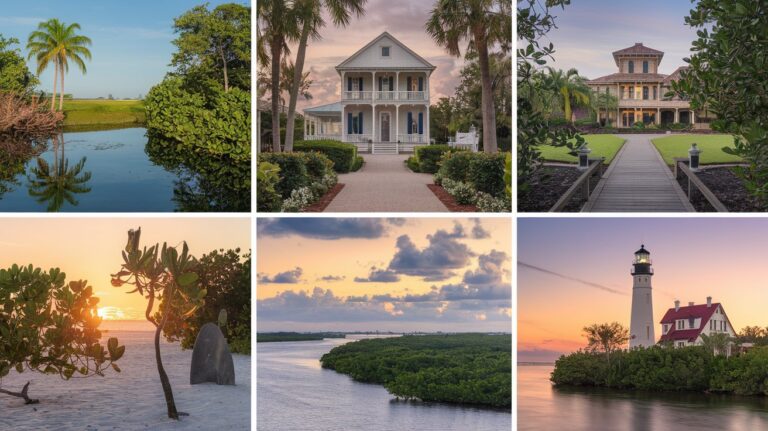Fort Myers, located along Florida’s Gulf Coast, offers a stunning combination of beautiful landscapes and diverse wildlife. Whether you’re a nature enthusiast or just looking for a peaceful day outdoors, Fort Myers’ parks provide ample opportunities to observe wildlife in its natural habitat. From mammals and birds to reptiles and even aquatic species, these parks are teeming with life. So, let’s dive into what you can expect to see on your wildlife adventure.
Common Mammals in Fort Myers Parks
When you think of Florida’s wildlife, many people jump to reptiles, but mammals are abundant in Fort Myers parks, too. While you might not always see them at first glance, there are several species that call these parks home.
White-Tailed Deer
One of the most commonly spotted mammals in Fort Myers’ parks is the white-tailed deer. These gentle creatures tend to be most active during dawn and dusk, making early mornings or late afternoons the best time to see them. They often graze in open fields or forest edges, blending in with the trees. Keep your eyes peeled near the park boundaries or wooded areas—they’re masters of camouflage.
Raccoons
Raccoons are not shy about making their presence known, especially in areas close to humans. These nocturnal foragers are commonly seen scavenging for food. If you’re camping or picnicking, don’t be surprised if one sneaks up to check out your snacks!
River Otters
For a more playful sight, head towards the wetlands or rivers within Fort Myers parks. River otters, with their sleek bodies and webbed feet, can sometimes be seen gliding through the water or playing along the riverbanks. These curious creatures are a joy to watch and are best spotted during the early morning.
Armadillos
A less commonly seen but fascinating mammal is the nine-banded armadillo. These small, armored creatures root through the dirt in search of insects. With their unique shell-like exterior, they are easy to recognize, though they tend to scuttle away quickly if disturbed.
Birdwatcher’s Paradise
If you’re into birdwatching, Fort Myers is a treasure trove. The variety of bird species you can see here is nothing short of impressive, especially during migration seasons.
Bald Eagles
Fort Myers is home to several bald eagle nesting sites, making it a prime spot for catching a glimpse of this iconic bird. These majestic birds of prey can often be seen soaring above large bodies of water, scanning for fish. If you’re lucky, you might even spot one perched high in the trees near its nest.
Great Blue Herons
Towering over shallow waters with their long legs, great blue herons are a common sight in Fort Myers’ wetlands. They are expert fishers and are often seen patiently waiting to strike at their prey. Look for them in areas like the Six Mile Cypress Slough Preserve.
Roseate Spoonbills
One of the most visually striking birds you can see is the roseate spoonbill, with its bright pink feathers and flat, spoon-shaped bill. These beautiful wading birds are popular with photographers and can be found feeding in shallow marshes.
Red-Shouldered Hawks
Another bird of prey to watch for is the red-shouldered hawk. These raptors are often seen perched on high trees or circling in search of small mammals. They play a key role in controlling the population of rodents and snakes in the area.
Reptiles and Amphibians of Fort Myers
Florida is famous for its reptiles, and Fort Myers parks are no exception. Here, you can find everything from large alligators to tiny tree frogs.
American Alligators
It wouldn’t be a trip to Florida without seeing an alligator! Fort Myers is home to many of these reptiles, especially in parks with bodies of water like ponds and marshes. The best way to view them safely is from a distance along designated boardwalks. They are most active during the warmer months, but sightings are possible year-round.
Gopher Tortoises
Gopher tortoises are a unique species often spotted in Fort Myers parks. These slow-moving reptiles dig deep burrows that provide shelter for other animals. As a keystone species, they play an important role in maintaining the ecosystem, and they are protected under state law.
Tree Frogs and Toads
If you visit during the warmer months, you might hear the chorus of tree frogs and toads filling the air. These small amphibians are critical to the local ecosystem, helping to control insect populations. Listen carefully, and you might be able to identify different species by their distinct calls.
Aquatic Wildlife in Fort Myers Parks
Fort Myers’ proximity to the Gulf and its network of rivers and marshes make it an excellent location for spotting aquatic wildlife.
Manatees
Manatees, or “sea cows,” are gentle giants that migrate to Fort Myers’ warmer waters during the winter months. You can often spot them in places like the Caloosahatchee River or Manatee Park, where they gather to stay warm. Watching a manatee lazily swimming just below the surface is an unforgettable experience.
Fish Species
Many parks in Fort Myers offer opportunities to observe local fish species in their natural habitats. For anglers, this is also a chance to engage in recreational fishing. Common fish include largemouth bass, bluegill, and catfish, depending on the park’s water source.
Insects and Butterflies in Fort Myers Parks
While larger animals often steal the show, insects and butterflies are an essential part of Fort Myers’ ecosystems.
Monarch Butterflies
Fort Myers is a key area for migrating monarch butterflies, especially in the fall. These orange-and-black beauties can be seen fluttering around wildflowers, especially in parks with pollinator gardens. Observing their delicate flight patterns is a peaceful experience.
Dragonflies
Dragonflies are frequently seen darting around the wetlands and ponds, playing their role as predators of smaller insects like mosquitoes. Their shimmering wings and agile flight make them a mesmerizing sight on a sunny day.
Threatened and Endangered Species in Fort Myers Parks
Fort Myers is home to several species that are threatened or endangered, making these parks vital to their conservation.
Florida Panther
Though rare, the Florida panther is one of the state’s most endangered mammals. While sightings are extremely uncommon, conservation efforts are underway to protect their habitat. Just knowing that Fort Myers plays a role in their survival adds depth to your wildlife-watching experience.
Wood Storks
Wood storks, large wading birds, are another endangered species you might spot in Fort Myers. These birds rely on wetland habitats for feeding and nesting, and you can often see them in parks like the Six Mile Cypress Slough Preserve.
Tips for Wildlife Watching in Fort Myers Parks
Best Times for Wildlife Spotting
The early morning and late afternoon are prime times for wildlife activity. Animals are more active during cooler parts of the day, and the lighting is perfect for photography.
Recommended Gear for Wildlife Observation
To maximize your experience, bring a pair of binoculars for birdwatching and a camera to capture the beauty of what you see. Lightweight clothing, sunscreen, and insect repellent are also recommended.
Responsible Wildlife Watching
It’s essential to respect the animals and their habitats. Maintain a safe distance, avoid feeding wildlife, and follow the “leave no trace” principle to ensure these parks remain pristine for future visitors.
Conclusion
Fort Myers parks are a true wildlife lover’s paradise. From majestic bald eagles to gentle manatees, the region’s diverse ecosystems support an incredible array of creatures. Whether you’re an experienced birder or a casual observer, these parks offer a chance to connect with nature. So, grab your gear, respect the wildlife, and enjoy all that Fort Myers has to offer!
FAQs
- What is the best park in Fort Myers for wildlife watching?
- The Six Mile Cypress Slough Preserve is a top choice for diverse wildlife sightings, including birds, mammals, and reptiles.
- Can I see manatees year-round in Fort Myers?
- Manatees are most commonly seen in the winter months when they migrate to warmer waters.
- Are there any dangerous animals in Fort Myers parks?
- While alligators and snakes are present, they typically avoid humans. Keep a respectful distance and follow park guidelines for safety.
- What is the best time of year to visit for birdwatching?
- Fall and winter are ideal for birdwatching, as many migratory species pass through during these seasons.
- How can I help protect wildlife while visiting Fort Myers parks?
- Follow park rules, avoid disturbing animals, and pick up any trash to help maintain the natural habitats of these species.




